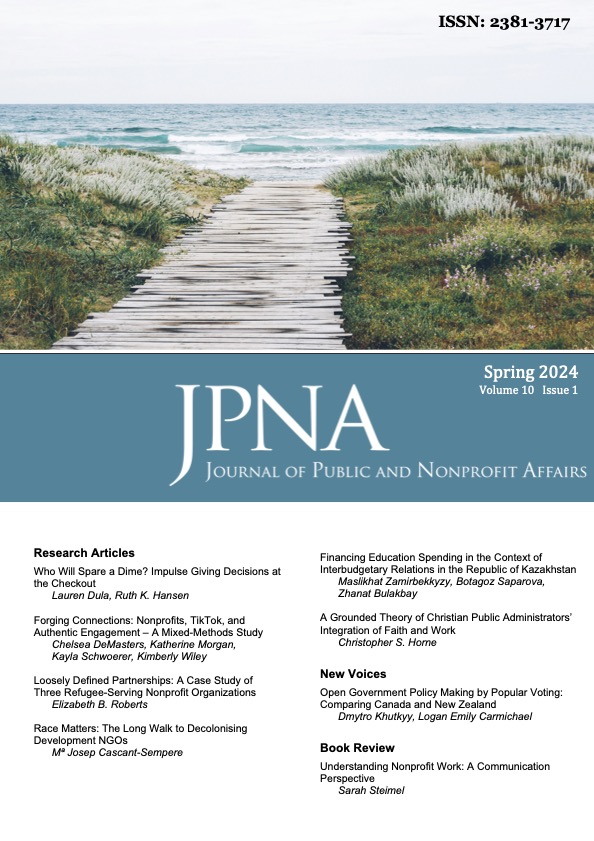Forging Connections: Nonprofits, TikTok, and Authentic Engagement – A Mixed-Methods Study
DOI:
https://doi.org/10.20899/jpna.dky82f18Keywords:
nonprofits, social media, TikTok, microbvlogsAbstract
TikTok, a social media platform designed for sharing short videos (“microvlogs”), provides an opportunity to learn how nonprofits adapt and implement social media strategies. Similarly, exploring nonprofits’ behavior on TikTok is useful for analyzing the impact that strategy has on the content nonprofits produce and user engagement. Using a mixed-methods design, this study analyzed data from 29 interviews and 575 microvlogs to answer three questions. First, how are nonprofits incorporating microvlogging into their social media strategy? Second, applying the hierarchy of engagement framework, do nonprofits produce social media content aligned with their expressed strategy? Finally, does alignment between strategy and output affect user engagement? The findings indicate that, unlike Facebook and Twitter/X, nonprofits on TikTok harness community-building content to facilitate information sharing and action. Strategy-output alignment significantly increases user engagement, but only for community-building content. Thus, social media strategy may be less important than authenticity on TikTok.
Downloads
Published
Issue
Section
License
Authors who publish with this journal agree to the following terms:
- Authors retain copyright and grant the journal right of first publication with the work simultaneously licensed under a Creative Commons Attribution License that allows others to share the work with an acknowledgment of the work's authorship and initial publication in this journal.
- Authors are able to enter into separate, additional, contractual arrangements for the non-exclusive distribution of the journal's published version of the work (e.g., post it to an institutional repository or publish it in a book), with an acknowledgment of its initial publication in this journal.
- Authors are permitted and encouraged to post their work online (e.g., in institutional repositories or on their website) prior to and during the submission process, as it can lead to productive exchanges, as well as earlier and greater citation of published work (see, The Effect of Open Access).







